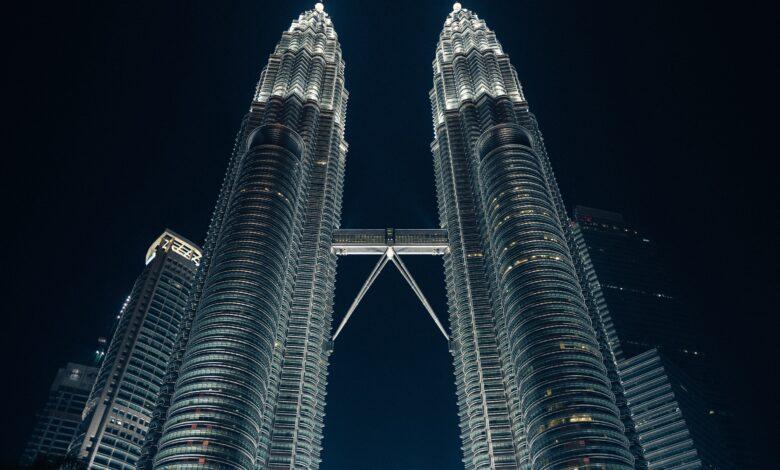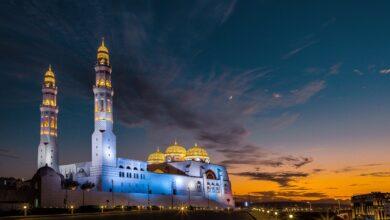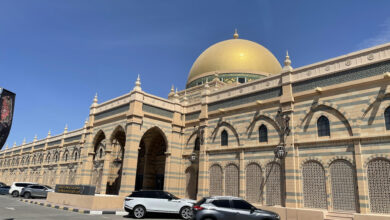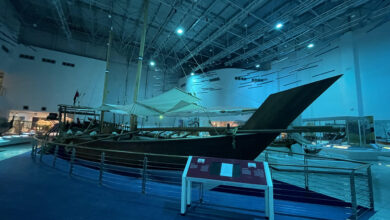🌏🏙️ Cultural Fusion in Kuala Lumpur, Malaysia 🎨🍜
Exploring the Diverse Tapestry of Heritage and Flavors

Introduction
Welcome to Kuala Lumpur, a city that serves as a living tapestry of cultural diversity and harmony. Nestled in the heart of Malaysia, Kuala Lumpur thrives as a melting pot where a myriad of cultures converge, interweaving their traditions, cuisines, and heritage. Join us as we embark on a captivating exploration of the city’s vibrant neighborhoods, each pulsating with its unique cultural vibrancy, contributing to the rich tapestry that defines Kuala Lumpur’s identity.
Chinatown: Where Tradition Meets Modernity
Kuala Lumpur’s Chinatown pulsates with a vibrant energy that beautifully juxtaposes traditional Chinese heritage with contemporary dynamism. This bustling district, known as Petaling Street, serves as the heart of this captivating blend.
Blend of Traditional Chinese Culture with Contemporary Influences
Chinatown in Kuala Lumpur seamlessly weaves together the rich tapestry of traditional Chinese culture with modern elements. Amidst the maze of streets, ancient temples stand as stoic reminders of heritage. The ornate architecture of temples like the Sin Sze Si Ya Temple and Guan Di Temple beckons visitors, offering glimpses into centuries-old customs and beliefs.
Yet, amidst this tapestry of tradition, modernity flourishes. The district teems with trendy shops, vibrant street art, and contemporary cafes that add a fresh, urban vibe to the area. It’s a place where traditional Chinese apothecaries stand adjacent to stylish boutiques, encapsulating the convergence of old and new.
Notable Attractions, Markets, and Culinary Delights
Petaling Street Market reigns as the quintessential attraction, a bustling hub where haggling for goods amidst a symphony of sights and sounds is an experience in itself. Visitors can indulge in an array of items, from knock-off designer goods to authentic local crafts. Exploring this market is a sensory journey, where the aroma of sizzling street food mingles with the buzz of bargaining.
Culinary adventures await in Chinatown’s diverse array of eateries. From humble street stalls serving up steaming bowls of noodles to modern fusion restaurants, the gastronomic scene here is a testament to Malaysia’s diverse palate. Sample delectable dishes like Char Kway Teow, Hainanese chicken rice, and crispy roast pork—each bite a fusion of flavors that mirrors the cultural blend of the district.
Chinatown in Kuala Lumpur is a vibrant tapestry where the past gracefully dances with the present. It’s a celebration of diversity, where tradition harmonizes with modernity, inviting visitors to immerse themselves in a captivating fusion of cultures and experiences.

Little India: Bridging Cultures and Heritage
Little India stands as a vibrant enclave pulsating with the rich tapestry of Indian heritage amidst the multicultural landscape of Malaysia. This hub encapsulates the essence of Indian traditions, seamlessly blending them with the local Malaysian flair, creating a unique cultural fusion.
Indian Traditions, Food, and Places of Interest
Step into Little India, and you’re immediately immersed in a sensory feast. Colorful saris adorn storefronts, the aroma of spices lingers in the air, and traditional music fills the streets. The area is a treasure trove of Indian culture, offering a glimpse into age-old customs, vibrant festivals, and intricate rituals that have transcended generations.
Food aficionados find delight in the array of Indian delicacies served in bustling eateries. From aromatic biryanis and flavorful curries to crispy dosas and syrupy jalebis, the culinary offerings tantalize taste buds with their authenticity and diversity.
Amidst the bustling streets, Little India boasts several places of interest. The Sri Mahamariamman Temple stands as a majestic testament to Hindu architecture, inviting visitors to marvel at its ornate façade and intricate sculptures. The bustling markets teem with trinkets, spices, and vibrant textiles, offering a haven for those seeking authentic Indian goods.
Fusion of Indian Culture with Local Malaysian Influences
What sets Little India apart is its harmonious blend of Indian traditions with Malaysian influences. Here, the colors, flavors, and festivities of India intertwine with the local customs and practices, creating a cultural synergy that is both captivating and enriching.
The fusion is evident in the celebrations of festivals like Deepavali, where the streets illuminate with lights, and communities come together, embracing diverse cultural identities. The influence extends to the language, with a blend of Tamil, Hindi, Malay, and English creating a unique linguistic tapestry.
Little India, therefore, stands not just as a microcosm of Indian heritage but as a testament to the beautiful amalgamation of cultures, where traditions seamlessly intertwine, celebrating diversity while forging a sense of unity.
Kampung Baru: Preserving Malay Heritage in the City
Kampung Baru stands as a cherished enclave in the heart of Kuala Lumpur, Malaysia, bearing deep-rooted historical significance amidst the modern urban landscape. This traditional village holds a treasure trove of Malay heritage, offering visitors a glimpse into the authentic essence of Malay culture.
Historical Significance
Established over a century ago, Kampung Baru remains a testament to Malaysia’s rich cultural heritage. Its inception dates back to the late 19th century, envisioned as a settlement for Malay communities to preserve their way of life amid rapid urbanization. Despite Kuala Lumpur’s evolution into a bustling metropolis, Kampung Baru remains a testament to preserving Malay traditions.
Traditional Malay Architecture, Cuisine, and Community Life
One of Kampung Baru’s most captivating aspects is its traditional Malay architecture. The village is adorned with charming wooden houses adorned with intricate carvings and vibrant colors, showcasing the exquisite craftsmanship of bygone eras. These homes retain their unique architectural styles, reflecting the village’s cultural heritage.
Moreover, the culinary delights found in Kampung Baru are an epicurean’s delight. The area is renowned for its authentic Malay cuisine, offering a plethora of dishes bursting with flavors—nasi lemak, rendang, and satay, to name a few. Visitors immerse themselves in the bustling night market, where the aroma of sizzling delicacies fills the air, creating a vibrant tapestry of flavors.
Community life thrives in Kampung Baru, fostering a strong sense of belonging and camaraderie. Residents uphold traditions through various cultural activities, including traditional dances, music performances, and communal gatherings, keeping the spirit of Malay heritage alive.
Efforts to Maintain Cultural Authenticity Amidst Urban Development
Amidst the city’s rapid development, preserving Kampung Baru’s cultural authenticity has been a focal point. Various initiatives aim to strike a balance between urban progress and cultural preservation. Urban planning endeavors emphasize the importance of conserving the village’s architectural heritage while integrating modern infrastructure sensitively.
Efforts by local authorities and community-driven initiatives focus on sustainable development that respects Kampung Baru’s heritage. These measures aim to maintain the village’s unique identity, ensuring that future generations can continue to cherish and experience the richness of Malay culture within the urban fabric.
Kampung Baru remains a living testament to the harmonious coexistence of tradition and progress, where the legacy of Malay heritage continues to thrive amidst the bustling cityscape.
Colonial Influences – Legacy of British Colonialism
Kuala Lumpur, a vibrant metropolis in Malaysia, proudly bears the indelible marks of British colonialism through its architectural heritage and cultural integration.
Remnants of British Colonial Architecture
Strolling through the streets of Kuala Lumpur, one encounters a juxtaposition of architectural styles, with remnants of British colonial influence seamlessly woven into the city’s landscape. The iconic Sultan Abdul Samad Building, an exquisite example of Moorish Revival architecture, stands proudly amidst the modern skyline. Its distinguished clock tower and intricate details showcase the colonial legacy that still graces the city.
Integration of Colonial Heritage with Malaysian Culture
What’s striking is how Kuala Lumpur has embraced its colonial heritage, integrating it harmoniously with Malaysian culture. The city’s evolution has seen colonial-era buildings repurposed into vibrant cultural hubs, boutique hotels, and bustling markets. The Old Kuala Lumpur Railway Station, with its distinct Mughal-inspired domes and arches, now houses a heritage hotel, offering guests a unique glimpse into the city’s past.
Notable Landmarks and Historical Significance
Numerous landmarks serve as living testaments to Kuala Lumpur’s colonial history. The historic Jamek Mosque, nestled at the confluence of the Klang and Gombak rivers, boasts stunning Moorish architecture and was built during British colonial rule. Additionally, the Anglican St. Mary’s Cathedral, standing gracefully with its neo-Gothic architecture, echoes the enduring legacy of British influence on the city’s religious landscape.
These landmarks not only showcase architectural prowess but also serve as historical touchstones, preserving the narrative of Kuala Lumpur’s evolution under British rule. They invite visitors to explore the layers of history that have shaped the city into the multicultural tapestry it is today.
The seamless fusion of British colonial architecture with Malaysian culture in Kuala Lumpur offers a compelling narrative, inviting locals and tourists alike to appreciate the rich heritage and diverse influences that have sculpted this vibrant cityscape.
FAQs
Q. Why is Kuala Lumpur known for cultural fusion?
A. Kuala Lumpur’s historical evolution and diverse population have fostered a rich fusion of cultures, making it a vibrant melting pot.
Q. How does cultural fusion impact the city’s identity?
A. Cultural fusion defines the city’s identity, influencing its architecture, food, traditions, and people’s way of life.
Q. What role do festivals play in celebrating cultural fusion?
A. Festivals in Kuala Lumpur showcase the city’s cultural diversity, fostering unity and appreciation among locals and tourists alike.
Q. How does cultural fusion benefit tourism in Kuala Lumpur?
A. Cultural fusion attracts tourists seeking diverse experiences, contributing significantly to Kuala Lumpur’s tourism industry.
Q. Is cultural fusion limited to specific aspects like food or architecture?
A. No, cultural fusion in Kuala Lumpur extends across various aspects, including art, music, festivals, and lifestyle.
Q. How does Kuala Lumpur preserve its cultural heritage amidst modernization?
A. Efforts are ongoing to preserve heritage sites, traditions, and indigenous practices alongside modern developments.
Conclusion
As we conclude our immersive journey through Kuala Lumpur’s cultural fusion, we leave with a profound appreciation for the city’s harmonious blend of traditions and modernity. Kuala Lumpur stands as a testament to the beauty of diversity, where various cultures coexist and intertwine, creating a rich and vibrant tapestry. From the bustling streets of Chinatown to the colorful sights and sounds of Little India and the preservation of Malay heritage in Kampung Baru, the city showcases a harmonious fusion that celebrates differences while fostering unity. Kuala Lumpur’s cultural fusion is a testament to the world that embracing diversity can lead to a thriving, dynamic, and enchanting society.
UP NEXT
https://touristeyes.com/street-food-bangkok/




Facebook Comments